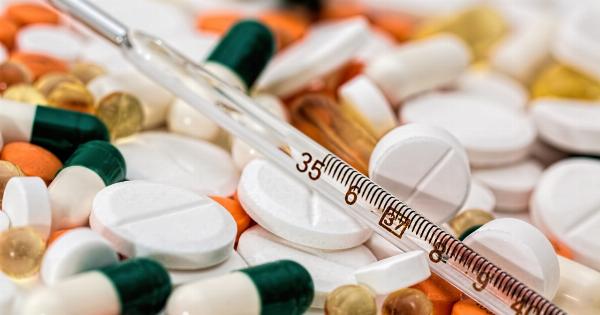An aneurysm and a stroke are both serious medical conditions that can have life-changing consequences. While they may share some similarities, they are different conditions that require different treatment approaches.
In this article, we will discuss the key differences and similarities between an aneurysm and a stroke, as well as the symptoms, causes, and treatment options for each condition.
What is an Aneurysm?
An aneurysm is a bulge or ballooning in the wall of an artery. Arteries are the blood vessels responsible for carrying oxygen-rich blood from the heart to the rest of the body.
When an aneurysm occurs, it is often compared to a weak spot on a tire wall that can potentially burst or rupture.
Types of Aneurysms
There are several types of aneurysms, including:.
- Abdominal Aortic Aneurysm (AAA): This type of aneurysm occurs in the abdominal aorta, the major blood vessel that supplies blood to the abdomen, pelvis, and legs.
- Cerebral Aneurysm: A cerebral aneurysm, also known as a brain aneurysm, occurs in a blood vessel in the brain and can potentially lead to a hemorrhagic stroke.
- Thoracic Aortic Aneurysm: This type of aneurysm occurs in the thoracic aorta, the major blood vessel that supplies blood to the chest area.
- Peripheral Aneurysm: Peripheral aneurysms can occur in the blood vessels supplying the arms, legs, or other peripheral areas of the body.
Aneurysm Symptoms
The symptoms of an aneurysm vary depending on its size, location, and whether it has ruptured or not.
In many cases, an unruptured aneurysm may not cause any symptoms and may only be discovered incidentally during a medical examination for unrelated conditions.
However, some common symptoms of an aneurysm can include:.
- Localized pain or tenderness
- Pulsating sensation near the site of the aneurysm
- Visible or palpable lump
- Dizziness or lightheadedness
- Shortness of breath
- Numbness or weakness in limbs
What is a Stroke?
A stroke, also known as a cerebrovascular accident (CVA), occurs when there is a disruption in the blood supply to the brain.
This disruption can be caused by a blockage in the blood vessels (ischemic stroke) or a rupture in a blood vessel leading to bleeding in the brain (hemorrhagic stroke).
Types of Strokes
There are two main types of strokes:.
- Ischemic Stroke: This is the most common type of stroke and occurs when a blood clot blocks a blood vessel supplying the brain. The blockage prevents blood and oxygen from reaching the brain, leading to damage to brain cells.
- Hemorrhagic Stroke: A hemorrhagic stroke occurs when a blood vessel in the brain ruptures and causes bleeding inside the brain. This can be due to weakened blood vessels, such as those affected by an aneurysm, or high blood pressure.
Stroke Symptoms
Recognizing the signs and symptoms of a stroke is crucial for prompt medical intervention. Common symptoms of a stroke include:.
- Sudden numbness or weakness, especially on one side of the body
- Difficulty speaking or understanding speech
- Confusion or disorientation
- Trouble seeing in one or both eyes
- Dizziness or loss of balance
- Severe headache
Aneurysm vs Stroke: Key Differences
While both an aneurysm and a stroke involve blood vessels in the body, there are key differences between the two:.
- Location: Aneurysms can occur in various places in the body, including the brain, aorta, and peripheral blood vessels. On the other hand, strokes specifically involve the blood vessels in the brain.
- Cause: Aneurysms are often caused by a weakening or bulging of the arterial wall, while strokes are caused by a disruption in the blood supply to the brain.
- Symptoms: An aneurysm may often be asymptomatic unless it has ruptured, while strokes have distinct symptoms that can help in identifying the condition.
- Treatment: The treatment for an aneurysm depends on its size, location, and the risk of rupture. Options include surveillance, lifestyle changes, medication, or surgical intervention. Strokes may require immediate medical attention to minimize brain damage and prevent further complications.
Prevention and Treatment
Preventing an aneurysm or stroke involves managing certain risk factors:.
- Control and monitor blood pressure
- Quit smoking
- Eat a healthy diet rich in fruits, vegetables, and whole grains
- Exercise regularly
- Manage diabetes and cholesterol levels
- Avoid excessive alcohol consumption
Treatment options for aneurysms and strokes include:.
- Medications to manage symptoms and underlying conditions
- Surgical intervention to repair or remove the aneurysm or restore blood flow in the case of a stroke
- Rehabilitation programs to help regain lost abilities and improve overall recovery
- Counseling and support groups for both patients and their families to cope with the physical and emotional challenges
Conclusion
Aneurysms and strokes are both serious medical conditions that require prompt medical attention. While aneurysms involve a weakening or bulging of blood vessels, strokes are caused by a disruption in blood supply to the brain.
Recognizing the symptoms and understanding the key differences between these conditions is crucial for early intervention and better outcomes. By managing risk factors and seeking appropriate treatment, individuals can reduce the likelihood of developing these conditions and improve their overall health.































